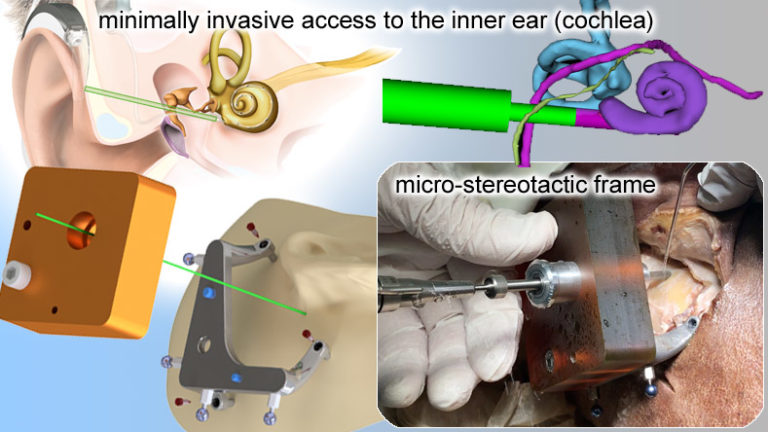Objectives: Drilling a minimally invasive access to the inner ear is a demanding task in which a computer-assisted surgical system can support the surgeon. Herein, we describe the design of a new micro-stereotactic targeting system dedicated to cochlear implant (CI) surgery and its experimental evaluation in an ex vivo study. Methods: The proposed system consists of a reusable, bone-anchored reference frame, and a patient-specific drilling jig on top of it. Individualization of the jig is simplified to a single counterbored hole drilled out of a blank. For accurate counterboring, the setup includes a manufacturing device for individual positioning of the blank. The system was tested in a preclinical setting using twelve human cadaver donors. Cone beam computed tomograph (CBCT) scans were obtained and a drilling trajectory was planned pointing towards the basal part of the cochlea. The surgical drill was moved forward manually and slowly while the jig constrained the drill along the predetermined path. Results: Drilling could be performed with preservation of facial nerve in all specimens. The mean error caused by the system at the target point in front of the cochlea was 0.30 mm ± 0.11 mm including an inaccuracy of 0.09 mm ± 0.03 mm for counterboring the guiding aperture into the jig. Conclusion: Feasibility of the proposed system to perform a minimally invasive posterior tympanotomy approach was shown successfully in all specimens. Significance: First evaluation of the new system in a comprehensive ex vivo study demonstrating sufficient accuracy and the feasibility of the whole concept.

Ex vivo evaluation of a minimally invasive approach for cochlear implant surgery
Sign-in or become an IEEE member to discover the full contents of the paper.
